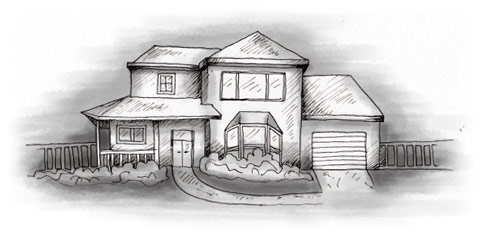Renting before buying is even more important for those planning to live permanently or set up a business in Spain, when it isn’t wise to buy a home until you’re sure that the business will be a success.
If possible, you should rent a similar property to that which you’re planning to buy, during the time of year when you plan to occupy it. Renting allows you to become familiar with the weather, the amenities and the local people, to meet other foreigners who have made their homes in Spain and share their experiences, and, not least, to discover the cost of living at first hand.
If you plan to live in Spain permanently or for long periods, you should rent for at least six months and preferably a year. An area that’s quiet and relaxing between November and March can become noisy, congested and stressful between April and October, particularly in package holiday regions. Conversely, a place that’s attractive in the summer can ‘close’ in the winter. If you cannot rent for that long, try to visit for two-week periods in each of the four seasons.
Provided you still find Spain alluring, renting buys you time to find your dream home at your leisure. You may even wish to consider renting a home long term (or even permanently) as an alternative to buying, as it saves tying up your capital and can be surprisingly inexpensive in many regions. Some people let out their family homes abroad and rent one in Spain, in which case it’s possible to make a profit.
If you’re looking for a rental property for a few months, e.g. three to six months, it’s best not to rent unseen, but to rent a holiday apartment for a week or two to allow yourself time to look around for a longer-term rental. Properties for rent are advertised in local newspapers and magazines, particularly expatriate publications, and can also be found through property publications in many countries.
Many estate agents offer short and long-term rentals and developers may also rent properties to potential buyers. A rental contract ( contrato de arrendamiento) is necessary when renting any property, whether long or short-term, where rental contracts are usually standard, state-sponsored agreements available from tobacconists’ ( estancos).
Long-term Rentals
Spain doesn’t have a flourishing long-term (i.e. one year or longer) rental market in resort areas, where it’s more common for people to buy, and it can be difficult to find good long-term rentals for a reasonable rent. Most rental properties in resort areas, whether long or short-term, are let furnished ( amueblado) and long-term unfurnished ( sin amueblar) properties are difficult to find.
However, in major cities, long-term rental properties are usually let unfurnished and furnished properties are in short supply. Rental costs vary considerably depending on the size (number of bedrooms) and quality of a property, its age and the facilities provided. However, the most significant factor affecting rents is the region, the city and the particular neighbourhood. A small, one or two-bedroom, unfurnished apartment (e.g. 50 to 75m2) which rents for up to €1,200 per month in Madrid or Barcelona, costs around 50 per cent less in most rural and resort areas outside the main tourist season.
Many homeowners are reluctant to sign long-term rental contracts, as a contract for a primary residence ( contrato de arrendamiento de vivienda) is for a minimum of five years (although it can be terminated earlier by a tenant as specified in the contract) and provides tenants with much more security than a short-term contract.
Short-term Rentals
Short-term rentals are always furnished and are usually for holiday lets or periods of up to a year. A short-term or temporary contract ( contrato de arrendamiento de vivienda por temporada) is necessary, which provides tenants with fewer rights than a long-term contract. There’s an abundance of self-catering properties to rent, including apartments, cottages, farmhouses, townhouses and villas. Rents for short-term rentals are usually higher than for longer lets, particularly in popular holiday areas where many properties are let as self-catering holiday accommodation.
However, many agents let self-catering properties in resort areas at a considerable reduction (except for the Canaries) during the ‘low season’, which may extend from October to May. Some holiday letting agents divide the rental year into three seasons, e.g. low (October to March), medium (April to June) and high (July to September).
The rent for an average one or two-bedroom furnished apartment or townhouse during the low season is usually between €500 and €800 a month for a minimum one or two-month let. Rent is usually paid one month in advance with one month’s rent as a deposit. Lets of less than a month are more expensive, e.g. €300 a week for a two-bedroom apartment in the low season, which is some 50 per cent (or less) than the rent charged in the high season. Many hotels and hostels also offer special low rates for long stays during the low season.
However, when the rental period includes the peak letting months of July and August, the rent can be prohibitively high. Standards vary considerably, from dilapidated, ill-equipped apartments to luxury villas with every modern convenience. Always check whether a property is fully equipped (which should mean whatever you want it to mean) and whether it has central heating if you’re planning to rent in winter.
Hotels & Motels
Hotel rates vary depending on the time of year, the exact location and the individual establishment, although you may be able to haggle over rates outside the high season and for long stays, for which many hotels offer special rates. Hotels located in large towns and cities, coastal resorts and spa towns are the most expensive and rates in cities such as Madrid and Barcelona are similar to other major European cities. However, inexpensive hotels can be found in most towns, where a single room ( habitación individual) can usually be found for €15 to €20 and a double ( habitación doble) for €20 to €30 (usually without a private bath or shower).
Minimum and maximum rates are fixed according to the facilities and the season, although there’s no season in the major cities or in the Canaries, and in ski resorts the low season is the summer. Rates are considerably higher in tourist areas during the high season ( temporada alta) of July and August, when rooms at any price are hard to find. On the other hand, many hotels offer low half or full board rates outside the main season, particularly in winter, when a double room with a bath can be had for €35 for two, including dinner (buffet) and breakfast (even better rates are offered for stays of a week or longer).
Hotels aren’t a cost-effective, long-term solution for home hunters, although there’s usually little choice if you need accommodation for a short period. Bed and breakfast accommodation is also available, although it isn’t usually budget accommodation, in which case you need to choose a hostel.
Home Exchange
An alternative to renting is to exchange your home abroad with one in Spain for a period. This way you can experience home living in Spain for a relatively small cost and may save yourself the expense of a long-term rental. Although there’s always an element of risk involved in exchanging your home with another family, most agencies thoroughly vet clients and have a track record of successful swaps. HomeLink International claims 99 per cent of its clients enjoy successful swaps. There are home exchange agencies in most countries, many of which are members of the International Home Exchange Association (IHEA).
There are many home exchange companies in the US, including HomeLink International with over 12,500 members in around 50 countries (www.swapnow.com ). Two long-established home exchange companies in the UK are HomeLink International (01962-886882, www.homelink.org.uk ), which publishes a directory of homes and holiday homes for exchange, and Home Base Holidays, 7 Park Avenue, London N13 5PG, (020-8886 8752, www.homebase-hols.com ). The Home Exchange Guide by M. Simon and T. Baker (Poyeen Publishing) gives comprehensive information and advice.
House Hunting
There are many ways of finding homes for sale in Spain, including the following:
- Newspapers and magazines, including the English-language publications and many property newspapers published in Spanish such as Don Anuncio (weekly and distributed free throughout Spain –www.tucasa.com), Llave en Mano (weekly and distributed free in Cadiz, Malaga and Seville provinces –www.llaveenmano.com) and De Primera Mano (monthly and available in Madrid and Malaga provinces –www.deprimeramano.net).
- Property exhibitions.
- The internet, where there are literally thousands of sites dedicated to property in Spain. These can be found by typing in ‘Spanish property’ or ‘Costa del Sol property’ in a search engine. Most of the property sites belong to or are linked to an estate agent.
- Visiting an area. Some property owners in Spain sell privately to avoid paying agent’s commission and put up ‘For Sale/ Se vende’ signs outside the property. This is particularly common in rural areas where properties may also be advertised in bars. You can also ask the locals if they know of any properties for sale.
- Estate agents. Most property owners sell through an estate agent.
This article is an extract from Buying a home in Spain. Click here to get a copy now.


